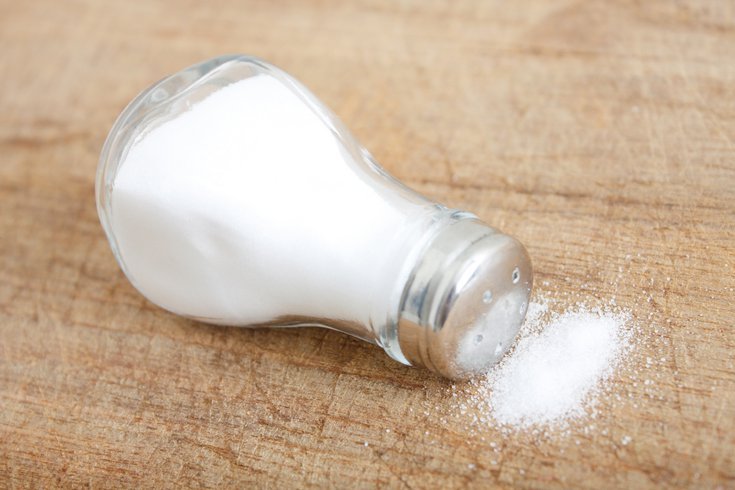
November 16, 2023
 SOURCE/IMAGE LICENSED FROM INGRAM IMAGE
SOURCE/IMAGE LICENSED FROM INGRAM IMAGE
A recent study says lowering sodium in one's diet can have the same results as some hypertension medications. The FDA says Americans eat an average of 3,400 mg of sodium per day, even though the recommended amount is less than 2,300 mg per day.
Newly published research shows that reducing one's sodium intake can be as effective as certain hypertension medications.
The study found that incorporating a low-sodium diet for just one week reduced participants' systolic blood pressure, or the pressure in one's arteries when the heart beats, by 7-8 mm Hg (millimeters of mercury, a measurement of pressure). Healthy systolic blood pressure is considered to be less than 120 mm Hg; healthy diastolic blood pressure, or the pressure in the arteries between heartbeats, is considered to be less than 80 mm Hg.
One week of a low-sodium diet reduced systolic blood pressure in 75% of study participants; this reduction was consistent across individuals with normal blood pressure and hypertension. The study, published in the Journal of the American Medical Association, evaluated over 200 middle-aged and elderly participants.
Americans eat an average of 3,400 mg of sodium per day, according to the U.S. Food and Drug Administration. The American Heart Association recommends keeping sodium intake to under 2,300 mg per day. About 90% of children and adults in the U.S. consume excessive amounts of salt, according to the National Heart, Lung and Blood Institute.
"It’s hard for most people to avoid foods that are high in sodium, in part because salt is hidden everywhere and people aren’t always aware of foods that contain high amounts," said Dr. Alison Brown, a program director at the NHLBI.
According to the CDC, over 40% of daily sodium intake is attributed to 10 types of food: breads, cured meats, pizza, poultry, soups, sandwiches, cheese, pasta, meat dishes like meat loaf and snacks like chips and popcorn.
Too much salt in one's diet can lead to high blood pressure, heart disease and stroke. Here's how to reduce one's sodium intake.
The CDC has a published guide with tips on reducing the amount of sodium in one's diet.
One of its recommendations is to purchase fresh, frozen or canned vegetables without added salt at the grocery store. Packaged items with "low sodium," "reduced sodium," or "no salt added" labels are preferable, and nutritional facts on packaging should be read.
When buying prepared meals, one should aim for those with less than 600 mg of sodium per serving (and be mindful of the number of servings per container). Fresh poultry, fish, pork and lean meats are less rich in sodium compared to processed alternatives.
At home, salt can be replaced or reduced by using alternatives like garlic, citrus juice or other salt-free seasonings. Adding fruits and vegetables while limiting sauces, mixes and instant products also can reduce one's sodium intake.
When at a restaurant, a server can be asked for a meal's nutrition information, and lower-sodium meals should be chosen. Eating takeout and fast food should be limited to special occasions.
The CDC also recommends following the Dietary Approaches to Stop Hypertension eating plan. The DASH diet prioritizes fruits, vegetables, whole grains and lean proteins like poultry, fish, beans, nuts and legumes and asks eaters to avoid refined grains and red and processed meats.
It also asks followers to eat foods low in cholesterol and saturated and total fats. Saturated fat is often found in fatty meats and full-fat dairy products, so low-fat and fat-free dairy products are encouraged.
The DASH plan says alcohol should be consumed in moderation. The Dietary Guidelines for Americans says a healthy intake of alcohol is one drink a day for women and two drinks a day for men.